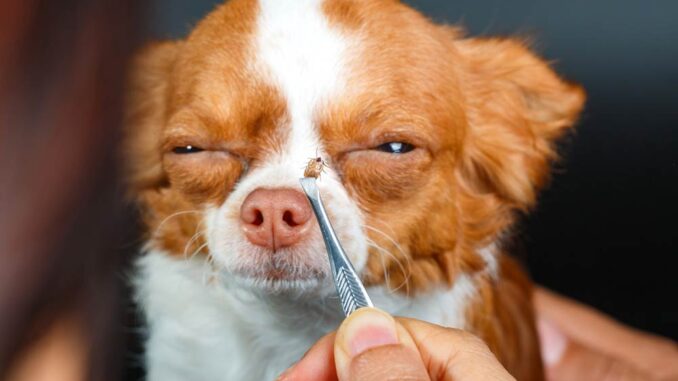
Ticks are found in every US state and in many other countries around the world. Amazingly, there are over 900 species of the little critters! Not only do they pose a challenge for our pets, they can also cause serious disease in humans.
Dogs and cats are often brought into my clinic with ticks on them. An owner sometimes mistakes the tick for a growth or is not confident to remove the tick at home. We’ll happily remove these ticks and show the owner how to do so from home in a safe manner. Take a look here for some great pictures to help you recognize ticks.
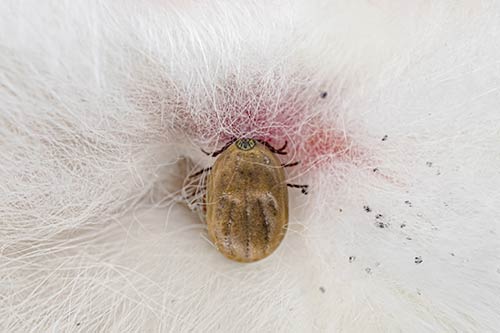
Not uncommonly, a lump forms in the spot where the tick was attached. There can be a few reasons for this, so let’s take a closer look.
Why is there a bump after removing a tick?
A tick pierces the skin and causes a significant inflammatory reaction. This can lead to redness and swelling and even the formation of a bump or lump. The lump that sometimes forms is called a ‘granuloma’ and this is not unusual and does not generally require specific treatment.
For most dogs, any swelling or inflammatory reaction after a tick has been removed will only last a few weeks. Very uncommonly, a granuloma may persist for a year or more. While reported in the literature, I have not seen this in my 10 years practicing veterinary medicine.
Common Causes of Bump or Lumps After Tick Bite
Some lucky dogs will not have any noticeable reaction or lump once their tick has been removed. For others, we will be able to see and feel a bump underneath the skin. There could be a scab on the top too.
Though local inflammation is the most common reaction, there are other possible reasons a lump will form.
Granuloma
As outlined above, it is not unusual for the body to form a granuloma after a tick has gone. This is a firm and ‘ropy’ swelling that can take some time to settle and disappear. If the dog has no signs of discomfort and the lesion is not growing or oozing, we tend to let the body deal with the granuloma by itself.
Uncommonly, a granuloma persists and a vet may advise surgical removal (1). View a picture here.
Abscess
Sometimes, the tick has ‘injected’ bacteria under the skin or the dog has introduced bacteria when scratching or chewing. This can lead to an abscess forming. Abscesses are swellings filled with pus (white blood cells) and bacteria that cause discomfort and localized redness as well as a bad smell.
It is important that abscesses are treated by lancing them, flushing them and providing a course of antibiotics. Dogs should not be allowed to get to them, and an Elizabethan collar may be needed. I find that dogs prefer the fabric, soft collars vs the plastic ones.
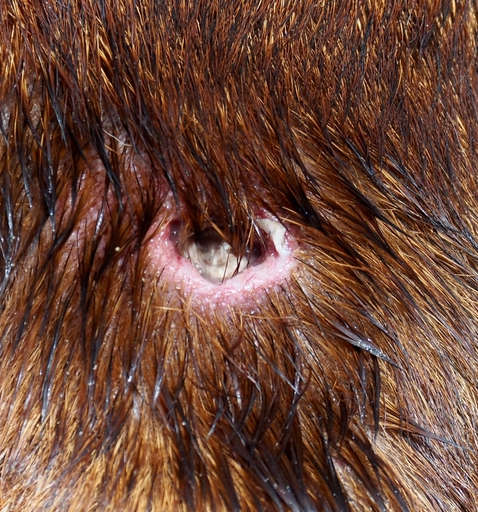
Part of the tick left behind
Sometimes, when an owner removes a tick they do not detach it properly and part of the head or legs remain behind. This can be prevented by twisting the tick until it detaches completely.
The body reacts to the foreign matter (part of the dead tick) by becoming inflamed and infections can develop. If this issue is not resolving and is causing ongoing issues, it is important that the remaining part of the tick is removed. This is a small procedure that can frequently be done under sedation with local anesthetic.
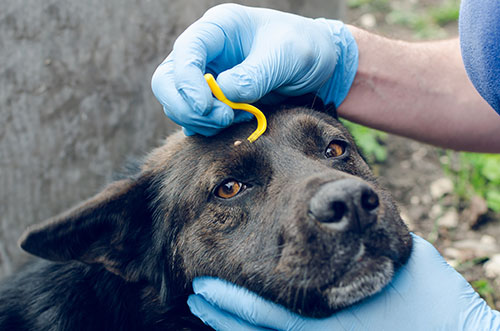
Allergy
Though not especially common, dogs could potentially be allergic to ticks and may develop a localized allergic reaction involving dermatitis and swelling. Anaphylaxis has been reported in humans.
How long does a lump last after a tick bite on a dog?
After removing a tick, there is usually a small bump at the bite location that could remain for a few weeks. The lump should not bother your dog or discharge fluid and should slowly shrink over time.
A lump that is growing could be an infection (abscess) and warrants vet attention.
Do I need to worry about a lump found after a tick bite?
It is not unusual for your dog to develop a small and firm lump after a tick bite and this should resolve by itself within a few weeks.
Home remedies to treat lumps after a tick bite
- It is a good idea to monitor any lump or bump closely, which can mean taking daily photos and using a small ruler or coin as a reference point. The lump should slowly decrease in size over time.
- Gently feel the lump to ensure your dog has no pain and monitor to ensure your dog does not start rubbing, chewing or scratching at it.
- We can gently bathe the lump with cotton wool and salt water once daily to prevent infection.
- If there are signs of an active infection (such as pain, an increase in size or discharge), a vet visit is required and your dog will likely be issued with some antibiotics.
When to see a vet
Owners can usually deal with ticks from home. This means removing them safely and cleaning the skin after. Ideally, animals who live in an area where ticks are prevalent should be given routine tick prevention too. When an owner is unsure how to remove a tick or thinks the tick has caused an infection, it is best they bring their dog to the vet.
Owners are also advised to come to the clinic if the lump left after a tick starts to grow, change or cause discomfort.
Is a lump after a tick bite a possible sign of Lyme disease?
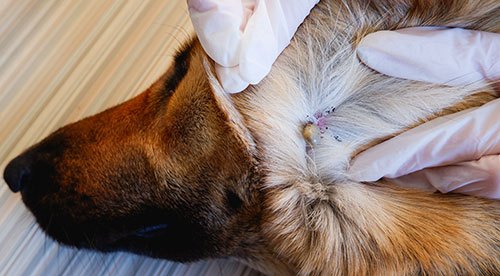
No, this would not be a typical symptom of Lyme disease (or any other tick borne disease).
Signs of Lyme disease in dogs can include lethargy, joint pain, fever and a reduced appetite. However, these signs will only usually present several weeks or months after the tick has gone.
FAQ
Is it normal to have a bump after a tick bite?
Yes, many dogs develop a small but firm swelling after a tick bite.
What does skin look like after removing a tick?
The skin is often red and there may be a small scab and some fur loss where the tick was attached.
References
Disclaimer: This website's content is not a substitute for veterinary care. Always consult with your veterinarian for healthcare decisions. Read More.


Be the first to comment